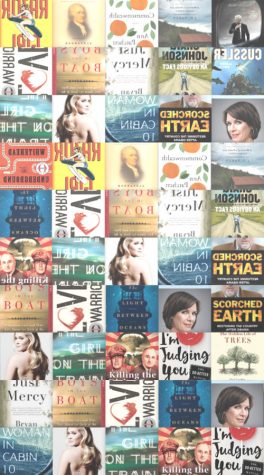How Exactly Does a Book Get on the New York Times Bestseller List?
Landing a highly-contested spot on the New York Times Bestseller List is undeniably huge in advancing an author’s career. There comes a significant increase in sales due to the popularity and visibility that the NYT Bestseller List provides. Getting on this list is often the ultimate goal for any author, whether it’s an unknown writer’s debut novel or J.K Rowling’s seven billionth book.
But how exactly does a book get on the bestseller list? The most common assumption tends to be that the list is simply the books that have sold the most copies, but this is not the case. The process to get on the list is quite subjective. It does not necessarily matter how many copies of a book an author sells; the editors of the Times handpick which books make it to the list.
Self-published author Autumn Kalquist recently spoke out on this matter. In a blog post, she touches on the possibility of the New York Times slighted her even before her book “Fractured Era” became extremely popular.
“The New York Times ‘curates’ their list, and had snubbed self-published authors in the past. I was told it was possible they’d ‘curate’ me off the list no matter how much I’d sold,” Kalquist wrote. After selling 20,000 copies and getting #16 on the USA TODAY’s Bestseller List, Kalquist was confident she’d land a spot on the New York Times Bestseller List as well, but to her frustration, it did not happen. After doing extensive research and finding out that her book had outsold eight of the 15 e-books as well as 10 of the 21 print books that did made the list, she emailed her research and data to the NYT but only got a vague response brushing aside her arguments. One can only wonder if this corrupt, arbitrary process of choosing bestsellers is not even more subjective than we imagine and is biased against indie and self-publishing authors.
 via nytimes.com
via nytimes.com
Colloquially labeling an author as self-publishing implies that said author has no separate publisher and there is no other person involved in the book’s sales besides the distributor. The author does not (or cannot) collaborate with major publishing companies (like HarperCollins, Penguin and Hachette Livre). They pay and are paid directly. They are in control of everything from content to design. They are independent in nearly every sense of the word.
Similar to the slim chances for landing an NYT Bestseller spot, another downfall for indie publishers is that they are seldom selected for literary prizes or reviewed by established critics. Given the few luck-of-the-draw indie authors who have obtained bestseller esteem, there still exist major disadvantages hindering their success. It is an unfair prejudice that favors traditionally published authors and makes it a roll of the dice for everyone else.
And yet, despite often going overlooked, e-books are a huge industry that make it extremely easy for self-published and indie authors to get their books online ready and available for the public. For example, in 2014, Kindle launched a subscription deal called “Kindle Unlimited.” As advertised on Amazon, Kindle Unlimited allows users to “access hundreds of thousands of Kindle books and thousands of audiobooks with Whispersync for Voice.” Most of the selections offered are from indie authors.
Some people may view this as a good thing, as these authors are getting their names and their books out there, but in order to have their book as an option in Kindle Unlimited, authors must comply with Amazon’s terms of service. In this case, that means not allowing their books in any other retail; essentially, hindering any opportunity their books might have elsewhere. So although Amazon and Kindle are the largest book-buying company, indie authors must make a choice. Not surprisingly, the few traditional authors that are on Kindle Unlimited are paid more by Amazon than indie authors are. As Huffington Post reporter Mark Coker said, “Amazon is paying certain bestsellers and traditionally published authors more for their participation in Kindle Unlimited than they’re paying indie authors who participate.”
Email Caroline Zemsky at [email protected].
Check out the rest of the Arts Issue here.

























































































































































